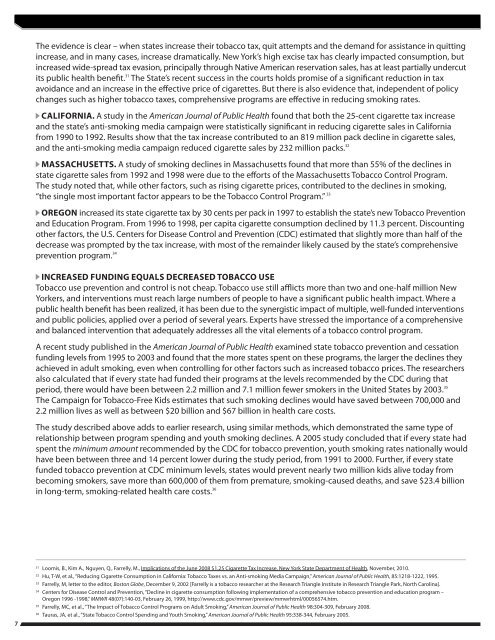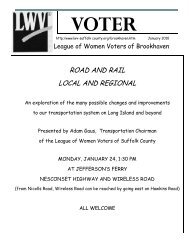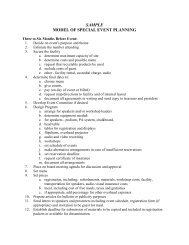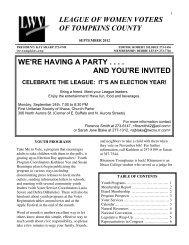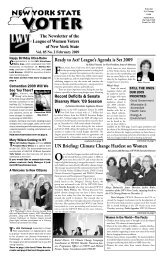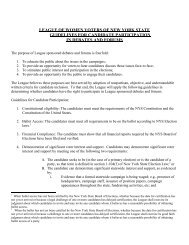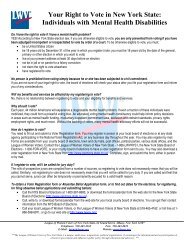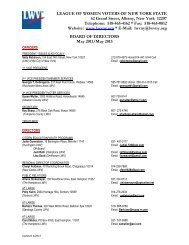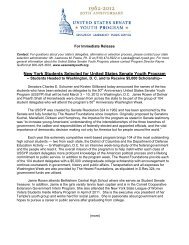UP IN SMOKE: - American Cancer Society
UP IN SMOKE: - American Cancer Society
UP IN SMOKE: - American Cancer Society
Create successful ePaper yourself
Turn your PDF publications into a flip-book with our unique Google optimized e-Paper software.
7<br />
The evidence is clear – when states increase their tobacco tax, quit attempts and the demand for assistance in quitting<br />
increase, and in many cases, increase dramatically. new York’s high excise tax has clearly impacted consumption, but<br />
increased wide-spread tax evasion, principally through native <strong>American</strong> reservation sales, has at least partially undercut<br />
its public health benefit. 31 The State’s recent success in the courts holds promise of a significant reduction in tax<br />
avoidance and an increase in the effective price of cigarettes. But there is also evidence that, independent of policy<br />
changes such as higher tobacco taxes, comprehensive programs are effective in reducing smoking rates.<br />
cAlIFornIA. A study in the <strong>American</strong> Journal of Public Health found that both the 25-cent cigarette tax increase<br />
and the state’s anti-smoking media campaign were statistically significant in reducing cigarette sales in California<br />
from 1990 to 1992. Results show that the tax increase contributed to an 819 million pack decline in cigarette sales,<br />
and the anti-smoking media campaign reduced cigarette sales by 232 million packs. 32<br />
mAssAcHUsEtts. A study of smoking declines in Massachusetts found that more than 55% of the declines in<br />
state cigarette sales from 1992 and 1998 were due to the efforts of the Massachusetts Tobacco Control Program.<br />
The study noted that, while other factors, such as rising cigarette prices, contributed to the declines in smoking,<br />
“the single most important factor appears to be the Tobacco Control Program.” 33<br />
orEgon increased its state cigarette tax by 30 cents per pack in 1997 to establish the state’s new Tobacco Prevention<br />
and Education Program. From 1996 to 1998, per capita cigarette consumption declined by 11.3 percent. Discounting<br />
other factors, the u.S. Centers for Disease Control and Prevention (CDC) estimated that slightly more than half of the<br />
decrease was prompted by the tax increase, with most of the remainder likely caused by the state’s comprehensive<br />
prevention program. 34<br />
IncrEAsEd FUndIng EqUAls dEcrEAsEd tobAcco UsE<br />
Tobacco use prevention and control is not cheap. Tobacco use still afflicts more than two and one-half million new<br />
Yorkers, and interventions must reach large numbers of people to have a significant public health impact. Where a<br />
public health benefit has been realized, it has been due to the synergistic impact of multiple, well-funded interventions<br />
and public policies, applied over a period of several years. Experts have stressed the importance of a comprehensive<br />
and balanced intervention that adequately addresses all the vital elements of a tobacco control program.<br />
A recent study published in the <strong>American</strong> Journal of Public Health examined state tobacco prevention and cessation<br />
funding levels from 1995 to 2003 and found that the more states spent on these programs, the larger the declines they<br />
achieved in adult smoking, even when controlling for other factors such as increased tobacco prices. The researchers<br />
also calculated that if every state had funded their programs at the levels recommended by the CDC during that<br />
period, there would have been between 2.2 million and 7.1 million fewer smokers in the united States by 2003. 35<br />
The Campaign for Tobacco-Free Kids estimates that such smoking declines would have saved between 700,000 and<br />
2.2 million lives as well as between $20 billion and $67 billion in health care costs.<br />
The study described above adds to earlier research, using similar methods, which demonstrated the same type of<br />
relationship between program spending and youth smoking declines. A 2005 study concluded that if every state had<br />
spent the minimum amount recommended by the CDC for tobacco prevention, youth smoking rates nationally would<br />
have been between three and 14 percent lower during the study period, from 1991 to 2000. Further, if every state<br />
funded tobacco prevention at CDC minimum levels, states would prevent nearly two million kids alive today from<br />
becoming smokers, save more than 600,000 of them from premature, smoking-caused deaths, and save $23.4 billion<br />
in long-term, smoking-related health care costs. 36<br />
31 Loomis, B., Kim A., nguyen, Q., Farrelly, M., implications of the June 2008 $1.25 Cigarette Tax increase, new York State Department of Health, november, 2010.<br />
32 Hu, T-W, et al., “Reducing Cigarette Consumption in California: Tobacco Taxes vs. an Anti-smoking Media Campaign,” <strong>American</strong> Journal of Public Health, 85:1218-1222, 1995.<br />
33 Farrelly, M, letter to the editor, Boston Globe, December 9, 2002 [Farrelly is a tobacco researcher at the Research Triangle institute in Research Triangle Park, north Carolina].<br />
34 Centers for Disease Control and Prevention, “Decline in cigarette consumption following implementation of a comprehensive tobacco prevention and education program –<br />
oregon 1996 -1998,” MMWR 48(07):140-03, February 26, 1999, http://www.cdc.gov/mmwr/preview/mmwrhtml/00056574.htm.<br />
35 Farrelly, MC, et al., “The impact of Tobacco Control Programs on Adult Smoking,” <strong>American</strong> Journal of Public Health 98:304-309, February 2008.<br />
36 Tauras, JA, et al., “State Tobacco Control Spending and Youth Smoking,” <strong>American</strong> Journal of Public Health 95:338-344, February 2005.


